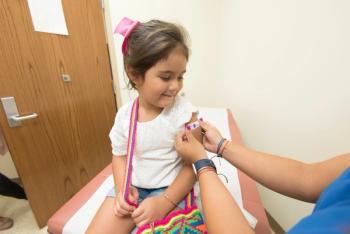
Survey of Sexual Minority Men Documents Growing Acceptability of U=U
Investigators have documented growing acceptability among sexual minority men that U=U, but with widespread overestimation of transmission risk.
Evidence has established that people living with HIV who achieve and maintain an undetectable viral load through antiretroviral therapy cannot sexually transmit the virus to HIV negative individuals. This fact, encapsulated in the slogan Undetectable Equals Untransmittable or U=U, is now a cornerstone of HIV prevention strategies and stigma reduction.
Investigators from Hunter College and the City University of New York have published results of new survey in the
Results were gathered during a 10-month span from November 2017 through September 2018. The study population was reached through advertisements placed in online venues such as social media and dating apps, which directed them to a survey.
Participants reported their HIV status as positive, negative, or unknown. HIV negative and unknown status participants were asked if they were currently prescribed PrEP and participants who reported living with HIV were asked if their most recent viral load test was undetectable, detectable, or unknown.
Answers were used to form 5 biomedical status groups: HIV negative/unknown on PrEP, HIV negative not on PrEP, HIV status unknown not on PrEP, HIV positive undetectable, and HIV positive detectable or unsure.
Participants were questioned about recreation drug use, casual male sexual partners, the month they completed the survey, perceived accuracy of U=U, and perceived risk of transmission with an undetectable partner.
A total of 111,747 sexual minority men provided full necessary data on study-relevant measures, constituting the analytic sample.
Perceived accuracy of U=U was found somewhat or completely accurate by 53.8% of HIV negative men, 39% of status unknown men, and 83.9% of HIV positive men.
Recent recreation drug use and recent casual sexual partnership were associated with higher perceived higher perceived accuracy.
Only 10% of the total sample perceived transmission risk to be 0 when an undetectable sexual partner was insertive, and a slightly higher 14% perceived such transmission risk when the undetectable partner was receptive. Among those who perceived U=U to be completely accurate; however, the proportions were 31% and 39%, respectively.
“The present results echo prior studies showing that men who report more risk behavior and more engagement with HIV treatment and prevention were more likely to believe in the accuracy of U=U,” the authors wrote.
Results indicate growing acceptance of U=U. A
Authors of the 2017 to 2018 survey suggested a shift from risk-reducing to protection enhancing framing.
“In other words, describing U=U as being ‘100% effective’ in protecting against HIV transmission may enhance acceptability among the groups who have been slower to accept the message to date,” authors of the report said.
Newsletter
Stay ahead of emerging infectious disease threats with expert insights and breaking research. Subscribe now to get updates delivered straight to your inbox.

















































































































































































































































































